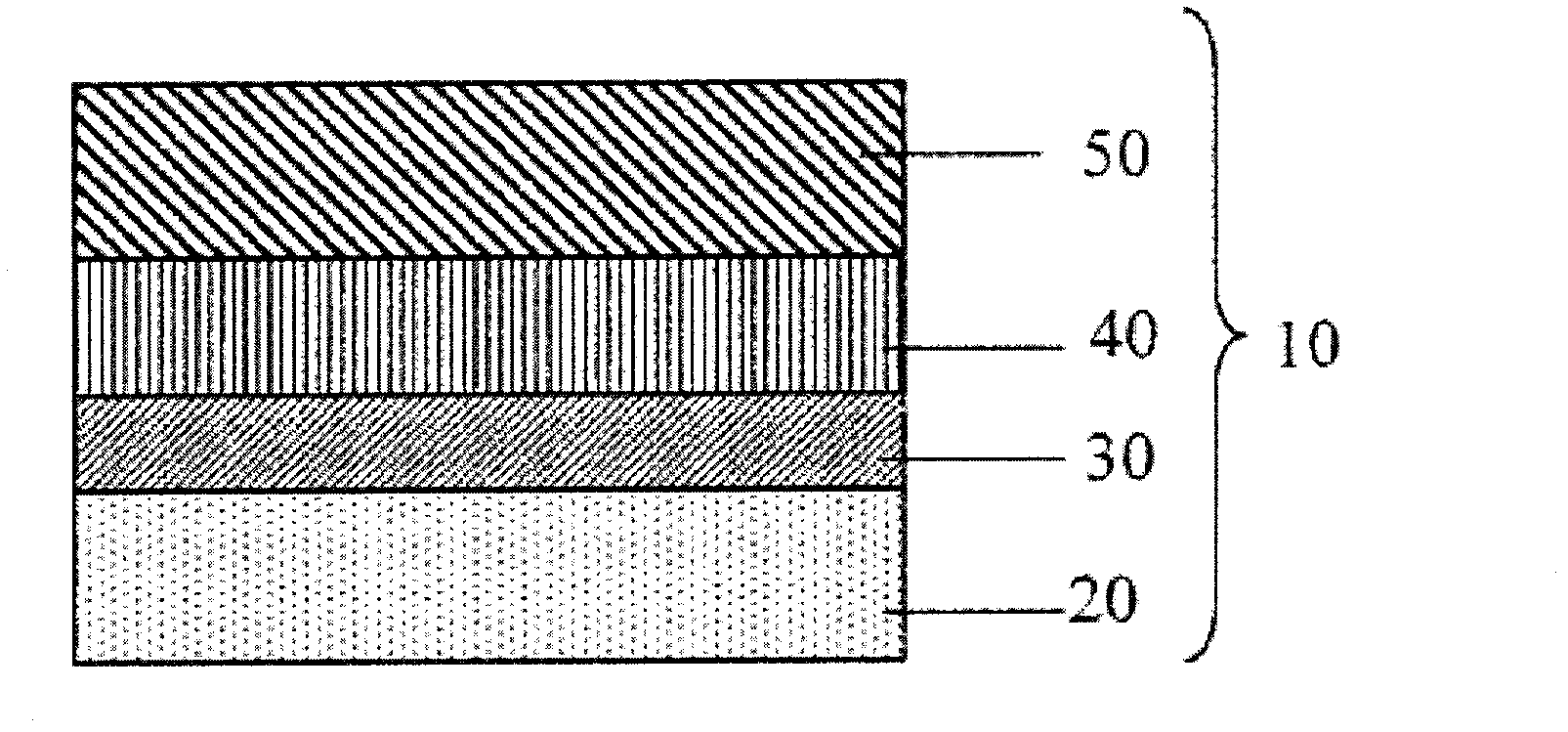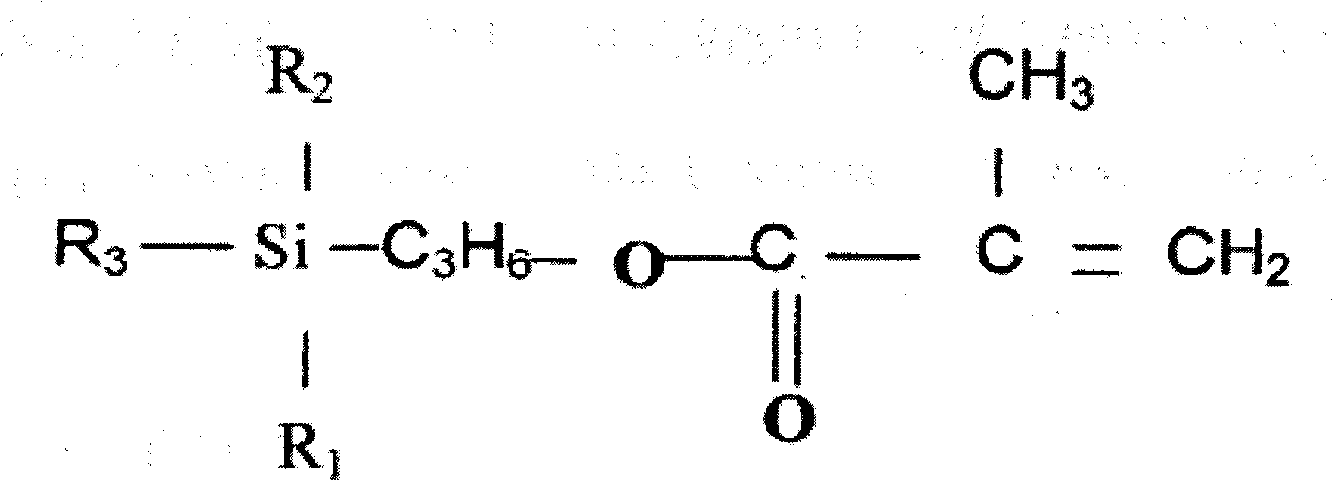Heat-resistant anti-static adhesive film
An antistatic, adhesive film technology, applied in conductive adhesives, film/sheet adhesives, adhesives, etc., can solve problems such as improving heat resistance that are not mentioned
- Summary
- Abstract
- Description
- Claims
- Application Information
AI Technical Summary
Problems solved by technology
Method used
Image
Examples
Embodiment
[0067] The following examples and comparative examples are given to illustrate the effects of the present invention, but the scope of rights of the present invention is not limited to the scope of the examples.
[0068] 1. [Test method]
[0069] 1. Measurement of available working time (Pot-life)
[0070] The prepared acrylic adhesive solution was placed in a constant temperature water bath at 25°C, and the viscosity change within 24 hours was measured with a Brook Field viscometer. And calculate the viscosity change rate % with the following formula.
[0071] Viscosity change rate% = (viscosity of adhesive solution after 24 hours - initial viscosity of adhesive solution) / initial viscosity of adhesive solution × 100%
[0072] 2. Measurement of steel plate adhesion
[0073] Cut the prepared pressure-sensitive adhesive test piece into a size with a width of 25mm and a length of 180mm, and stick it on a SUS 304 steel plate that has been ground back and forth 30 times with #2...
manufacture example 1
[0087] [Production Example 1] Preparation of Acrylic Polymer (A)
[0088] In a reaction tank equipped with a stirrer, a thermometer, and a condenser, add 225 parts by weight of 2-ethylhexyl acrylate, 20 parts by weight of 4-hydroxybutyl acrylate, 0.3 parts by weight of acrylic acid, 25 parts by weight methoxypolyethylene glycol (350) acrylate, 0.1 parts by weight of 2,2'-azobisisobutyronitrile as a polymerization initiator and 270 parts by weight of ethyl acetate, while introducing nitrogen and stirring slowly, and The above solution was heated to 75° C., and polymerized at 75° C. for 8 hours to prepare a solution (30% by weight) of an acrylic polymer (A). The weight average molecular weight of the acrylic polymer (A) was 400,000.
manufacture example 2
[0089] [Production Example 2] Preparation of Acrylic Polymer (B)
[0090] In a reaction tank equipped with a stirrer, a thermometer, and a condenser, add 225 parts by weight of 2-ethylhexyl acrylate, 20 parts by weight of 4-hydroxybutyl acrylate, 0.3 parts by weight of acrylic acid, 25 parts by weight methoxypolyethylene glycol (550) acrylate, 0.1 parts by weight of 2,2'-azobisisobutyronitrile as a polymerization initiator and 270 parts by weight of ethyl acetate, while introducing nitrogen and stirring slowly, and The above solution was heated to 75° C., and polymerized at 75° C. for 8 hours to prepare a solution (30% by weight) of an acrylic polymer (B). The weight average molecular weight of the acrylic polymer (B) was 300,000.
PUM
| Property | Measurement | Unit |
|---|---|---|
| rate of change | aaaaa | aaaaa |
Abstract
Description
Claims
Application Information
 Login to View More
Login to View More - R&D
- Intellectual Property
- Life Sciences
- Materials
- Tech Scout
- Unparalleled Data Quality
- Higher Quality Content
- 60% Fewer Hallucinations
Browse by: Latest US Patents, China's latest patents, Technical Efficacy Thesaurus, Application Domain, Technology Topic, Popular Technical Reports.
© 2025 PatSnap. All rights reserved.Legal|Privacy policy|Modern Slavery Act Transparency Statement|Sitemap|About US| Contact US: help@patsnap.com



